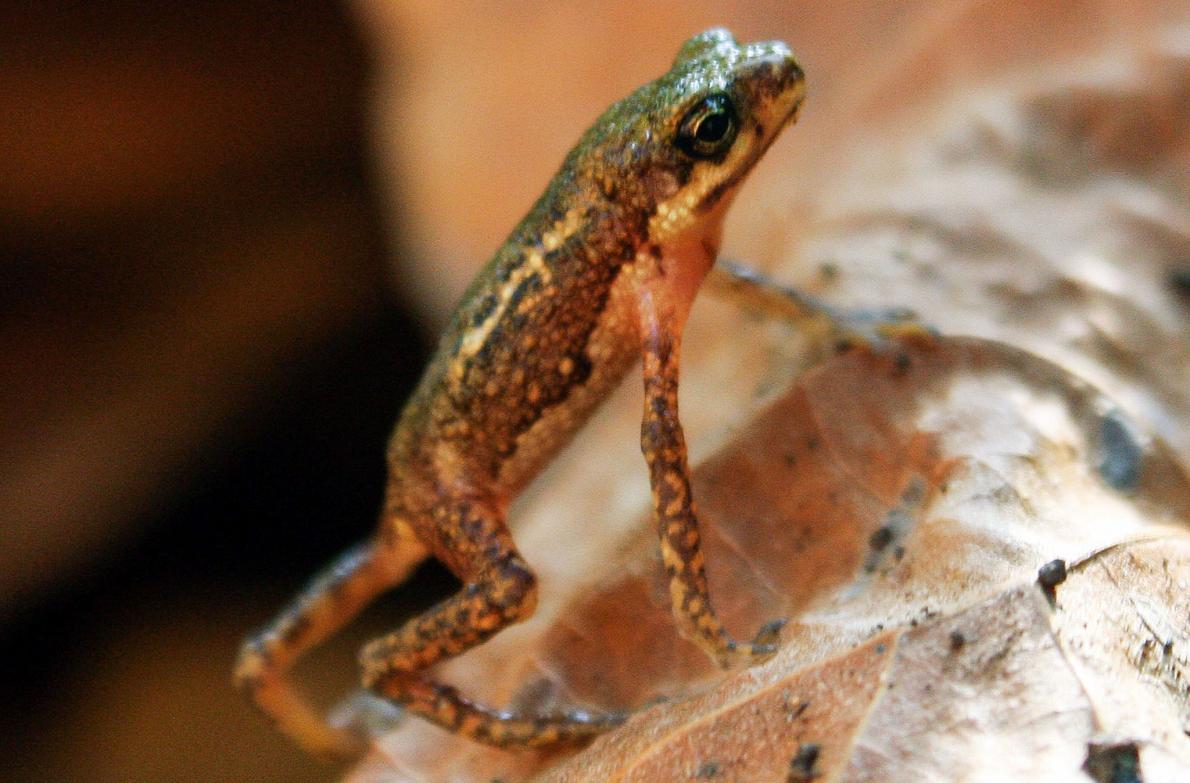“Extinct” Amphibians Rediscovered After Nearly Half a Century
Two species of amphibians thought lost to science have been found again in the mountain forests of the Philippines.
It had been 50 years since anyone laid eyes on the Malatgan River caecilian, a legless amphibian native to the island province of Palawan in the Philippines.
Scientists feared the species, whose written record was lost in a museum destroyed during the Battle of Manila in World War II, was gone forever.
That is, until a team of scientists saw something slithering through the dirt during a recent trip to the Philippines.
“It was basically a coincidence,” says Rafe Brown, an evolutionary biologist at the University of Kansas who was on the expedition team. “One of the students happened to be walking by it and thought it was a worm. But lo and behold, it was a Malatgan River caecilian.”
Brown and his team have been wading across rivers and sifting through mud in the Palawan (map) backcountry for over 15 years looking for signs of this and other species lost to science.
When the expedition finally stumbled across the serpentine amphibian, it was at the end of a road and a seven-hour hike beyond that from the nearest village. The area is known as Cleopatra’s Needle.
“This is an animal that doesn’t have any flashy colors or anything like that, but it’s one of those last, iconic species that we couldn’t find,” says Brown.
Remarkably, the expedition also found the Palawan toadlet (Pelophryne albotaeniata), which had been missing for the last 40 years.
Lost and Found
The rediscoveries are the result of a biodiversity survey launched in December 2014 and carried out by the Palawan Council for Sustainable Development, Global Wildlife Conservation, the Amphibian Survival Alliance, and Rainforest Trust.
“When we started this project, we didn’t know for sure if these animals were there,” says Robin Moore, conservation officer with the Amphibian Survival Alliance.
“For me, it’s incredible to find these two amphibians after not seeing them for decades. It highlights how much is out there that we don’t know.”
Joseph Mendelson, a herpetologist and director of research at Zoo Atlanta, adds that “discoveries like this reinforce the importance of continued biodiversity surveys around the world.”
More Species Surprises?
While many of the Philippines’ forests have fallen to development, mining, and agriculture, the island of Palawan is still relatively underdeveloped. A 2013 study in Science deemed the Palawan Game Refuge and Bird Sanctuary as the fourth-most irreplaceable protected area in the world when it comes to protecting biodiversity and species found nowhere else.
That’s why it’s important to set aside—and continue studying—these species-rich spots, Mendelson said by email.
“The scarier situations are those where we have dedicated teams thoroughly searching intact habitats and they just cannot find so many species of amphibians,” he says.
“Places like Mexico have far too many examples like this.”
But Palawan Province, along with local tribes and the international scientific community, are working to prevent this fate by protecting Cleopatra’s Needle, where the two new species were found.
Moore is optimistic about what other secrets the region may hold.
“I think it shows that if we give nature a chance, it can surprise us.”
By Jason Bittel, National Geographic

